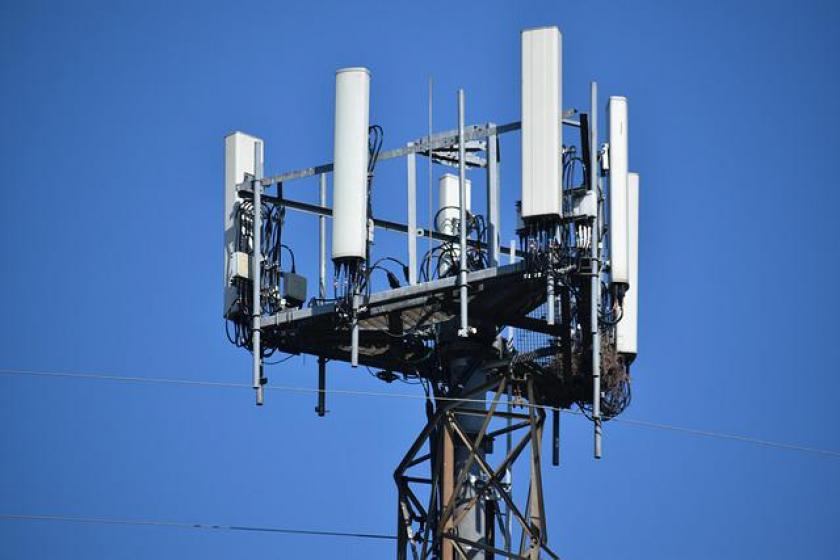Myths and Realities of Private 5G
As IT leaders continue to familiarize themselves with what private 5G can and cannot accomplish for their organization, it’s important to separate fact from fiction.
February 24, 2023

For most enterprise network administrators, cellular networking is a relatively foreign concept that’s largely left to public carriers to understand and deliver. However, now that private LTE and 5G networks are viable options for a number of enterprise use cases, interest in the technology is on the rise. As IT leaders continue to familiarize themselves with what private 5G can and cannot accomplish for their organization, it’s important to separate fact from fiction. Let’s examine some of the more common myths regarding private 5G to set the record straight once and for all.
Myth 1: Private 5G is only ideal for applications that require high speed and low latency
While 5G new radio (NR) can achieve multigigabit speeds, there are a few factors that can limit overall throughput. The first one deals with the wireless spectrum channel widths that can be obtained for use. In some countries, private spectrum is unrestricted, and thus channel sizes can be configured up to the maximum 100MHz width. In these cases, a single 5G AP can theoretically reach multigigabit throughput rates. However, in countries like the US, where the FCC limits CBRS channel widths to a maximum of 40MHz, a maximum aggregate throughput rate of 1Gbps with 10ms round-trip network latency is a more realistic number. While these speed and latency numbers are respectable, it’s realistically on par with what Wi-Fi 6 and 6E can deliver today.
In reality, private 5G is much less about network performance and more about improved reliability, quality of service control, and improved range.
Reliability is achieved because it’s far less likely that external interference will be detected compared to Wi-Fi. Likewise, the quality of service improvements of private 5G can be gained through the use of QoS-backed network slicing and superior client media access control. Finally, indoor and outdoor access point coverage range is significantly improved compared to Wi-Fi, with realistic outdoor coverage exceeding 1KM.
Myth 2: A split RAN private 5G architecture is superior to integrated RAN
While there are several deployment architectures for private 5G, the two leading models are split radio access network (RAN) and integrated RAN. Some P5G vendors that push one architecture over another are muddying the waters when it comes to understanding the pros and cons of each deployment model.
The difference between split RAN and integrated RAN is found at the access point (AP) level. With an integrated RAN, each AP handles all layer 2 and layer 3 functions, while a split RAN model separates layer 3 functions, offloading these services to an on-premises or cloud-deployed server. The split RAN approach also allows businesses and service providers to mix and match different vendor equipment if they so choose.
In most situations, split RAN is ideal for high-density and high-performance deployments such as smart cities, public venues, transportation hubs, and large university campuses. Decoupling and offloading processor-intensive network services onto a dedicated server delivers improved performance at scale.
Integrated RAN architectures, on the other hand, are better suited for enterprise deployments in manufacturing, retail, warehouse, logistics, and standard business buildings/campuses. Integrated models work better in these scenarios due to the improved ease of deployment and simplified integration into existing enterprise LANs. What's more, no on-premises or cloud-based server is required, which eliminates the need for data center space and associated network infrastructure connectivity build-out and ongoing management costs.
Myth 3: Private 5G QoS cannot be guaranteed from end-to-end
Managing the QoS and network SLAs of cellular data traffic on 5G networks is handled by what’s known as network slices. Using a standard 5G network slice, specific network sites or locations can be placed into logically segmented slices with standards-based QoS-like parameters attached known as 5QI (5G QoS Identifier). This is how 5G NR applies QoS characteristics such as queue priority level, packet delay, and error rate.
The problems with 5G network slicing at the moment, however, are two-fold. First, to achieve end-to-end quality of service across the radio network, 5G device endpoints must be able to participate in the 5QI slicing process. Unfortunately, this technology is largely not yet implemented in endpoints.
The second problem with network slicing is that it is not as granular as many enterprises need it to be. In most cases, IT administrators are expecting to have similar levels of QoS granularity that are currently available in typical Ethernet-based LANs. With traditional network slicing, this is not the case. The good news is that a subset of the network slicing standard does allow for this if the private 5G technology can support it. Celona Inc., for example, has patented a traffic management capability they refer to it as MicroSlicing. With MicroSlicing enabled, IT admins can apply 5QI settings on a per-application basis. What’s more, the 5QI mappings can be converted to standard QoS when packets reach the wired LAN. Thus, in some situations and with certain vendors, end-to-end QoS is indeed possible.
Myth 4: Upgrading a Private LTE network to 5G requires significant hardware upgrades
As it stands today, private cellular networks can operate using either LTE or 5G. For certain situations, LTE may be a better cellular technology option compared to 5G as it’s significantly cheaper to install and compatible with far more cellular end devices.
One confusion surrounding those looking at integrating private LTE surrounds eventual upgrade paths to 5G in the future. A growing assumption is that an upgrade path from LTE to 5G would require significant hardware upgrades to achieve. In reality, private cellular vendors are now building converged 4G/5G cores with a full IP stack that can concurrently support both LTE and 5G traffic. Along with this, they add an orchestration platform and physical SIM cards or eSIMs that are compatible with both LTE and 5G technologies. Thus, in many cases, only the LTE access point would require replacement. Now vendors are beginning to sell multimode APs that support both LTE and 5G networks and associated SIMs. Thus, in some situations, migrating from LTE to 5G is nothing more than a software upgrade.
Related articles:
Read more about:
5GAbout the Author(s)
You May Also Like





